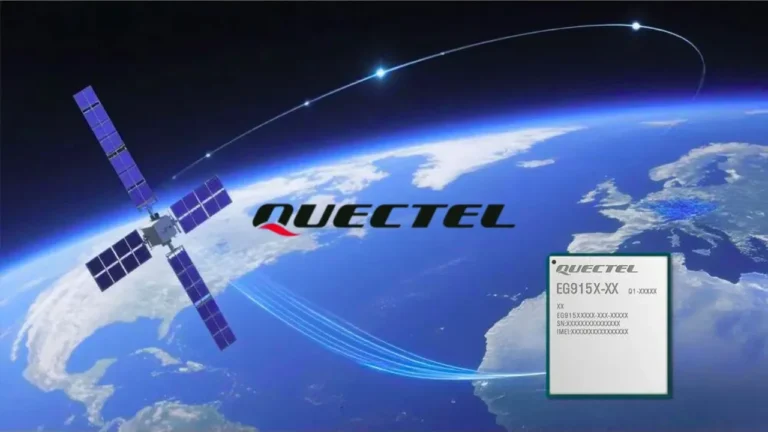Industry Standards Groups Strengthen Cybersecurity with SPDM, Post-Quantum Cryptography, and CNSA 2.0 Alignment
In a significant step toward addressing the growing complexity of global cybersecurity threats, DMTF (Distributed Management Task Force) and its industry partners—including the CXL Consortium, NVM Express, Inc., PCI-SIG®, SNIA, and the Trusted Computing Group—have announced advancements to the Security Protocol and Data Model (SPDM) standard. These updates expand SPDM’s capabilities to support post-quantum cryptography (PQC) and align with the National Security Agency’s Commercial National Security Algorithm (CNSA) 2.0 Suite. This evolution ensures that SPDM remains a robust, future-proof framework for secure device communication, protecting against quantum-enabled threats that could compromise traditional cryptographic methods.
As organizations brace for the transition to post-quantum cryptography, SPDM’s adaptable architecture positions it as a critical tool for safeguarding device authentication, confidentiality, and data integrity across industries. The integration of PQC and alignment with CNSA 2.0 underscores the collective commitment of these standards groups to stay ahead of emerging security challenges while fostering interoperability, resilience, and advanced cryptographic protections.
A Unified Approach to Future-Proof Security
“DMTF’s SPDM standard has been instrumental in establishing the integrity of infrastructure and advancing secure device communication across the industry,” said Jeff Hilland, President of DMTF. “As we prepare for the transition to PQC, SPDM’s adaptable and robust framework ensures that devices remain protected against emerging threats. We fully support the evolution of SPDM to incorporate PQC, safeguarding the future of secure authentication and data integrity in an increasingly complex cybersecurity landscape.”
This advancement reflects a collaborative effort among global standards organizations and industry leaders to ensure seamless integration of cutting-edge security innovations. By working together, these groups are driving progress in areas such as encryption, authentication, and device management, ensuring that SPDM remains at the forefront of secure communication protocols.
Industry Leaders Embrace SPDM and PQC Innovations
The adoption of SPDM and its new capabilities is already gaining traction among leading technology companies:
- Broadcom: Jas Tremblay, Vice President and General Manager of the Data Center Solutions Group at Broadcom, emphasized the importance of SPDM and PQC in securing data centers. “Our PCIe Ethernet NICs and NVMe storage adapters utilize DMTF’s SPDM and PQC standards to help protect against emerging cybersecurity and post-quantum threats,” he said. Broadcom’s collaboration with DMTF highlights its commitment to enabling ecosystems with critical security innovations.
- HPE: Fidelma Russo, Executive Vice President and General Manager of Hybrid Cloud and CTO at HPE, reiterated the company’s dedication to end-to-end security. “We believe Post Quantum Cryptography in DMTF’s SPDM will ensure robust, future-proof protection for hardware authentication and verification,” she explained. HPE has already deployed quantum cryptography in its server infrastructure and plans to expand this capability across its technology portfolio.
- Intel: Ronak Singhal, Senior Fellow and Chief Architect for Xeon Roadmap at Intel Corporation, noted the importance of post-quantum resilience. “As a co-developer of the DMTF specification, Intel supports the PQC-ready SPDM standard as a critical step toward security and resilience in the emerging quantum computing era,” he stated.
- Lenovo: Chris Dreikosen, Vice President and Chief Quality and Security Officer at Lenovo Infrastructure Solutions Group, highlighted the role of SPDM in enhancing platform security. “This enhancement to DMTF’s SPDM standard, by incorporating PQC, will enable additional security capabilities that help us meet the demands of Lenovo customers and the industry at large,” he said.
- Supermicro: Arun Kalluri, Vice President of Software Products at Supermicro, expressed his support for SPDM and PQC standards. “Security continues to be a critical issue for the industry, and Supermicro is committed to aggressively implementing SPDM and PQC in our extensive portfolio of Cloud, AI, Storage, and Edge products,” he added.
Collaboration Across Standards Organizations
The evolution of SPDM is a testament to the power of collaboration among standards organizations. For example:
- CXL Consortium: Dr. Debendra Das Sharma, Chair of the CXL Consortium, emphasized the importance of SPDM and PQC in supporting confidential computing. “CXL IDE and TSP rely on DMTF’s SPDM and PQC protocols to meet the industry’s demand for secure, reliable solutions,” he said.
- NVM Express: Amber Huffman, President of NVM Express, praised the inclusion of PQC support in SPDM. “This enhancement will improve secure, reliable storage solutions across the industry,” she noted.
- PCI-SIG: Al Yanes, President and Board Chair of PCI-SIG, highlighted the organization’s incorporation of SPDM into PCIe technology. “The collaboration to advance the SPDM security standard demonstrates how standards groups can successfully join forces to meet industry needs,” he said.
- SNIA: Richelle Ahlvers, Vice-Chair of the SNIA Board of Directors, underscored the value of partnerships between DMTF and SNIA. “Together, these standards foster innovation and resilience across the industry,” she stated.
- Trusted Computing Group: Rick Martinez, Vice President of TCG, emphasized the role of SPDM and PQC in strengthening device security. “Together, these standards safeguard our ecosystem, building the trust and reliability customers expect,” he concluded.
Preparing for a Post-Quantum World
The integration of post-quantum cryptography into SPDM marks a pivotal moment in the evolution of cybersecurity. As quantum computing advances, traditional cryptographic methods risk becoming obsolete. By adopting PQC and aligning with CNSA 2.0, SPDM ensures that organizations are equipped to defend against quantum-enabled threats while maintaining compliance with regulatory requirements.
Building a Resilient Future
The continued evolution of SPDM, supported by industry leaders and standards organizations, highlights the collective commitment to advancing cybersecurity in an era of unprecedented threats. By incorporating post-quantum cryptography and aligning with CNSA 2.0, SPDM sets a new benchmark for secure device communication, ensuring resilience against both current and future risks.
For businesses and industries seeking robust, scalable security solutions, SPDM represents a cornerstone of modern cybersecurity frameworks. With its ability to adapt to emerging threats and integrate seamlessly with existing technologies, SPDM is poised to play a vital role in shaping the future of secure communications. As the digital landscape evolves, the collaboration between DMTF and its partners serves as a model for how unified efforts can drive meaningful progress in cybersecurity.





